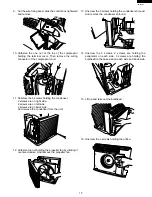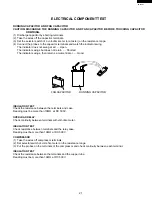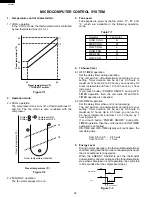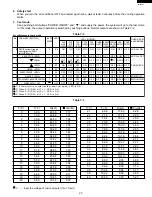
19
AF-06CSL
PROPER FLUXING
Flux is necessary when using silver solder; it is not required
when using silfos on copper to copper joints.
To do a good job the flux should cover the tube surface
completely. Be careful not to introduce any flux inside the
tubing.
Fluxing should be done after the tubing is mated together
and just before brazing is done. Do not allow it to dry out.
When brazing, the flux should become entirely liquid and
clear, like water. The temperature will be at 1100˚F and only
a little more heat will allow the alloy to flow freely into the joint.
INNER CONE
TORCH STEM
SILVER ALLOY
Figure 3
Directing Torch Flame to Copper Tubing.
3/8"
OUTER CONE
HOTTEST PART
OF FLAME
INNER CONE
TORCH STEM
Figure 4
Composition of Torch Flame.
HEATING THE TUBING
Direct the torch flame so that the larger tube receives most
of the heat. Silver solder flows at 1200˚F and silfos flows at
1300˚F.
Heat all around the tubing.
The flame is composed of two cones, a smaller inner cone
(pale blue) in calor and a much larger outer cone. The hottest
part of the flame is at the tip of the inner cone. The flame
should be directed at the joint with the tip of the cone just
touching the surface of the tubing. Figure 3 and 4.
DEHYDRATING SEALED SYSTEM
Many servicers feel that since air conditioners run with evaporator temperatures above 33˚F, moisture will not present a
problem. Nothing is further from the truth. Oxygen in moisture plus the heat produced during compression will react with the
refrigerant oil to produce harmful acids in the system which will break down motor winding insulation, create sludge and pit
component parts, reducing efficiency of the air conditioner and shortening the life of compressors.
There it becomes mandatory that good dehydrating practices be adhered to at all times.
Proper hook up procedures as shown in Figure 5 must be used in order to pull and good vacuum from the system.
The use of a good vacuum pump is very important so that the boiling point of any water in the system will be lowered to a
point where it will vaporize and be expelled from the system in the form of vapour.
















































